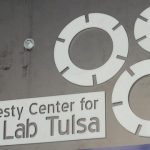
Increasing Diversity in Biomedical Research
In 2009, four TAF Academy students left their small, secluded campus in Federal Way for an imposing complex of buildings on 15 acres of south Lake Union to begin internships at the Fred Hutchinson Cancer Research Center (FHCRC). These sophomores were entering the doors of an experience that changed their lives. Former Hutch interns are now attending schools such as University of British Columbia, Seattle Pacific, University of Washington, and Rensselaer Polytechnic Institute.
How did it occur that these young people have had the remarkable opportunity to work in this world-renowned facility that is home to the work of 3 Nobel Prize winners?

Dottie Thomas with TAF Academy students and FHCRC interns
It is doubtful that this would have ever happened without the supportive, collaborative practice of science that FHCRC is known for. The famous work of Dr. E. Donnall Thomas and his wife Dottie exemplifies this.
Dr. Thomas, who received a Nobel Prize in 1990, was the pioneer of bone marrow transplantation whose work changed forever the treatment of leukemia and other blood diseases. His wife was his researcher, grant writer, lab manager, and spent most of the 7 days of the week at the Hutch alongside her husband. Their work was intensely collaborative. Dr. Thomas recruited brilliant young coworkers to whom he gave credit. As he said before his death in 2012, “…my work and philosophy have been heavily influenced by a wonderful group of dedicated colleagues.”
One of his colleagues, Dr. Beverly Torok-Storb of the FHCRC Clinical Research Center, had a great idea. She created a proposal for an innovative program that was funded by the National Heart, Lung, and Blood Institute of the National Institute of Health. As the Hutch says, “The goal is to promote diversity in the biomedical research workforce by providing students with experiences, scientific content, and professional mentoring that will increase their likelihood of attending college and obtaining a graduate degree in science.”
TAF Academy, a small STEM school with an emphasis on project-based learning, was the perfect partner as its goals for its students are a perfect match. Its mission is to increase the numbers of minority students in the STEM professions. The new relationship opened doors, as described by David Harris, TAF’s Program Manager for STEM Integration: “This experience is not only an opportunity for students to learn about life science from award-winning scientists, but also an opportunity for students to see themselves as scientists. The development that happens with our students at the Hutch is not only apparent intellectually, but in their demeanor as well. I see students who may have been quiet at the beginning of the program confidently speaking with adults as colleagues by the end of the school year.”
The Thomases bought into the program. Dr. Bev, as the interns call her, recounts their support of her efforts with young people: “Realizing the importance of diversity and early training, they contributed to our internship program by designating funds for young scientist training.”
Dr. Thomas was eager to recruit young people into science. In 1999 he shared a message to young people interested in medical research in an interview: “I’ve derived tremendous satisfactions from this life. I can’t visualize any other, really. Where you can have important problems to work on that involve lots of scientific disciplines. Where you can have bright, stimulating colleagues to work with. Where it’s not only challenging and interesting, but fun. It’s satisfying. Here I am, about to be 79, and I’m still coming to work every day because I can’t think of anything I’d rather do.”
The internship program that is part of his legacy is but one example of the extraordinary opportunities that can be created when public education partners with public-spirited organizations. Today there are 6 TAF Academy interns who will receive 90 hours of instruction during each of the 3 years they will participate, including 8-week summer internships and the opportunity to work in a special training lab dedicated to high school students. The experience is also an impressive addition to their resumes that will impress college and career recruiters, not to mention their deep STEM learning that is nearly unrivaled.
David Harris tells of one example: “Recently, our 11th grade FHCRC interns created a filter apparatus that efficiently delivers treatment via liposomes to targeted cancerous cells. They won first place at the science fair this year. It makes me wonder what other problems our students could solve with even more resources and guidance from people who care.”
By Pamela Wise and Zithri Saleem




